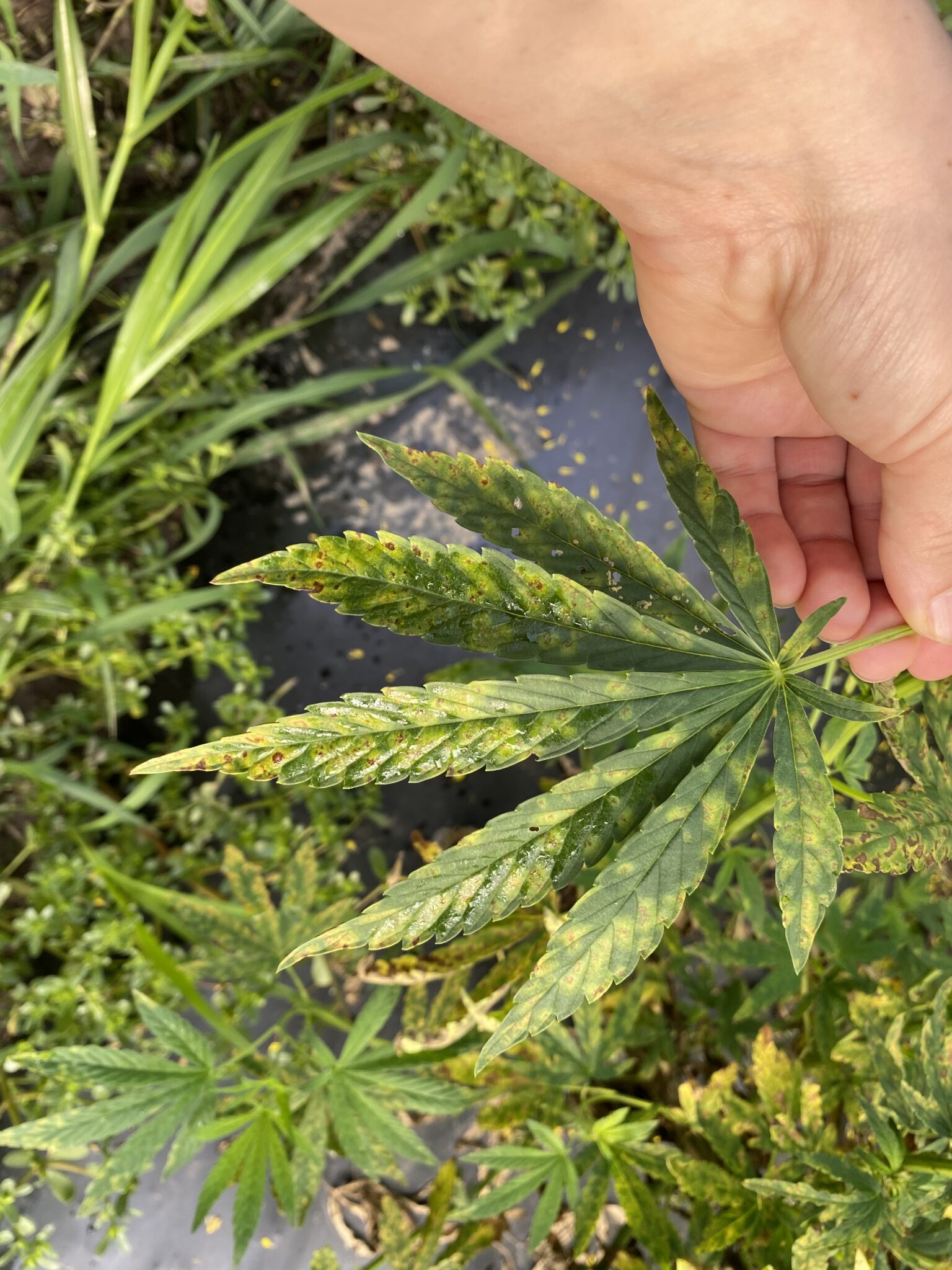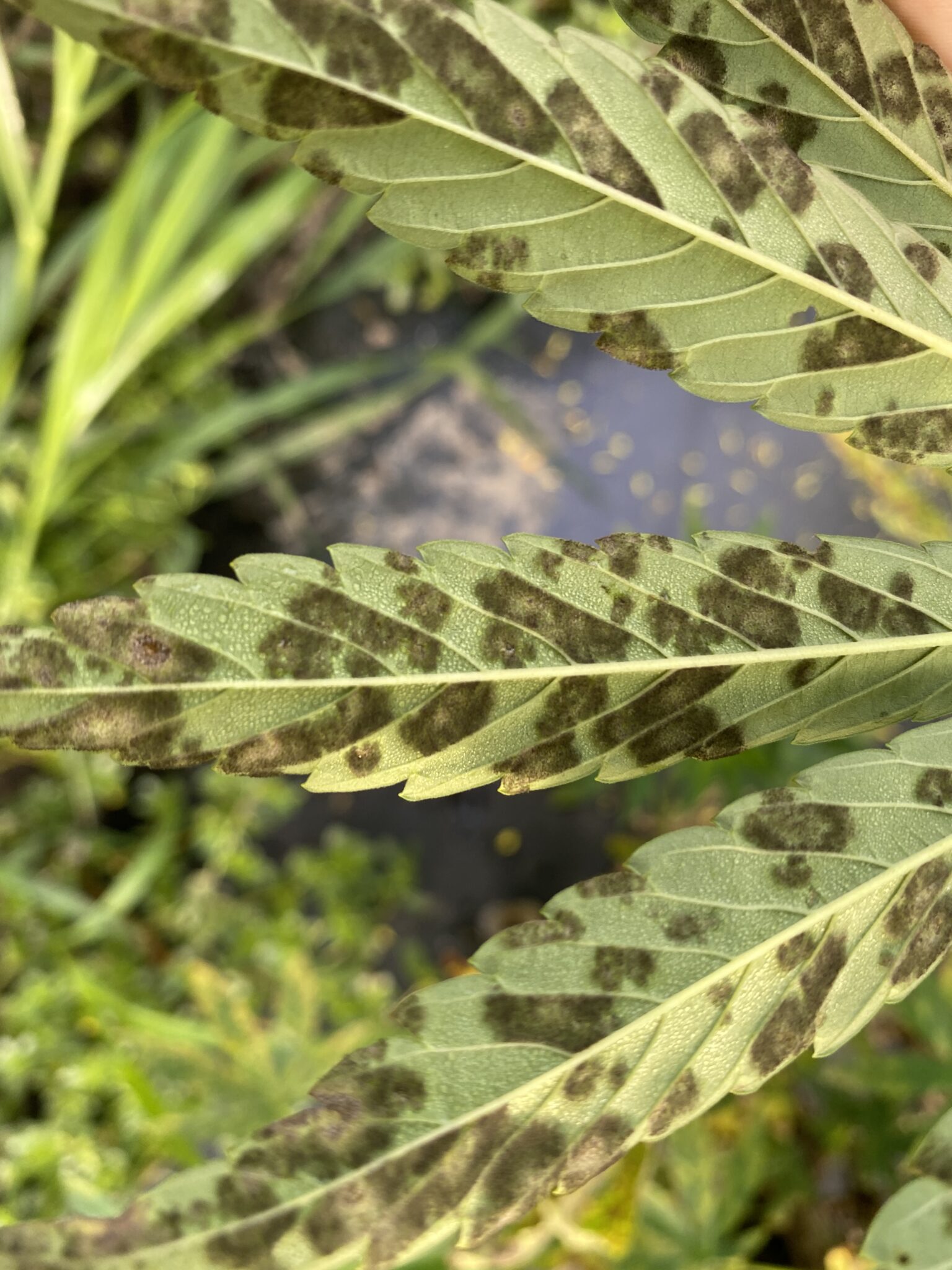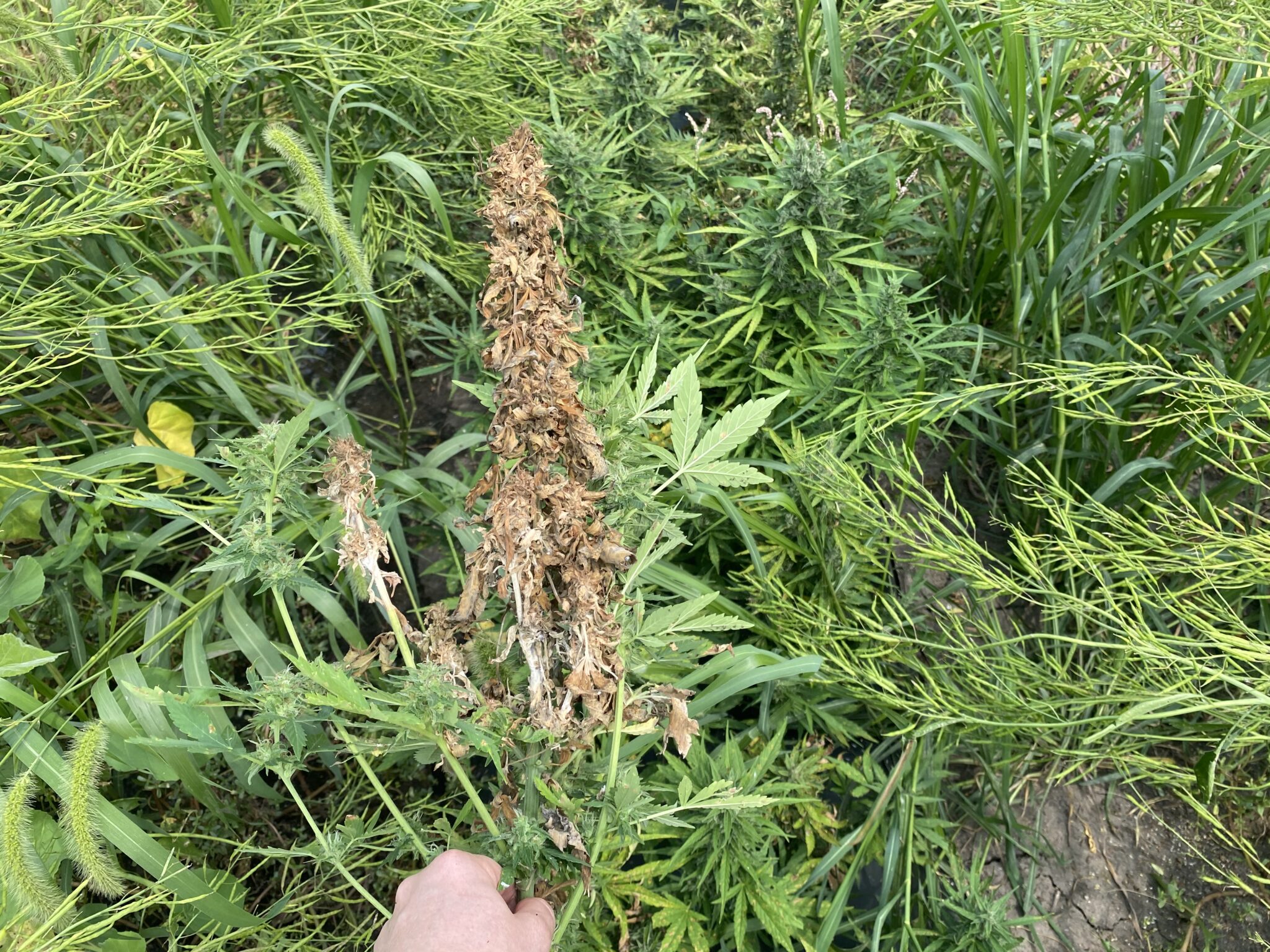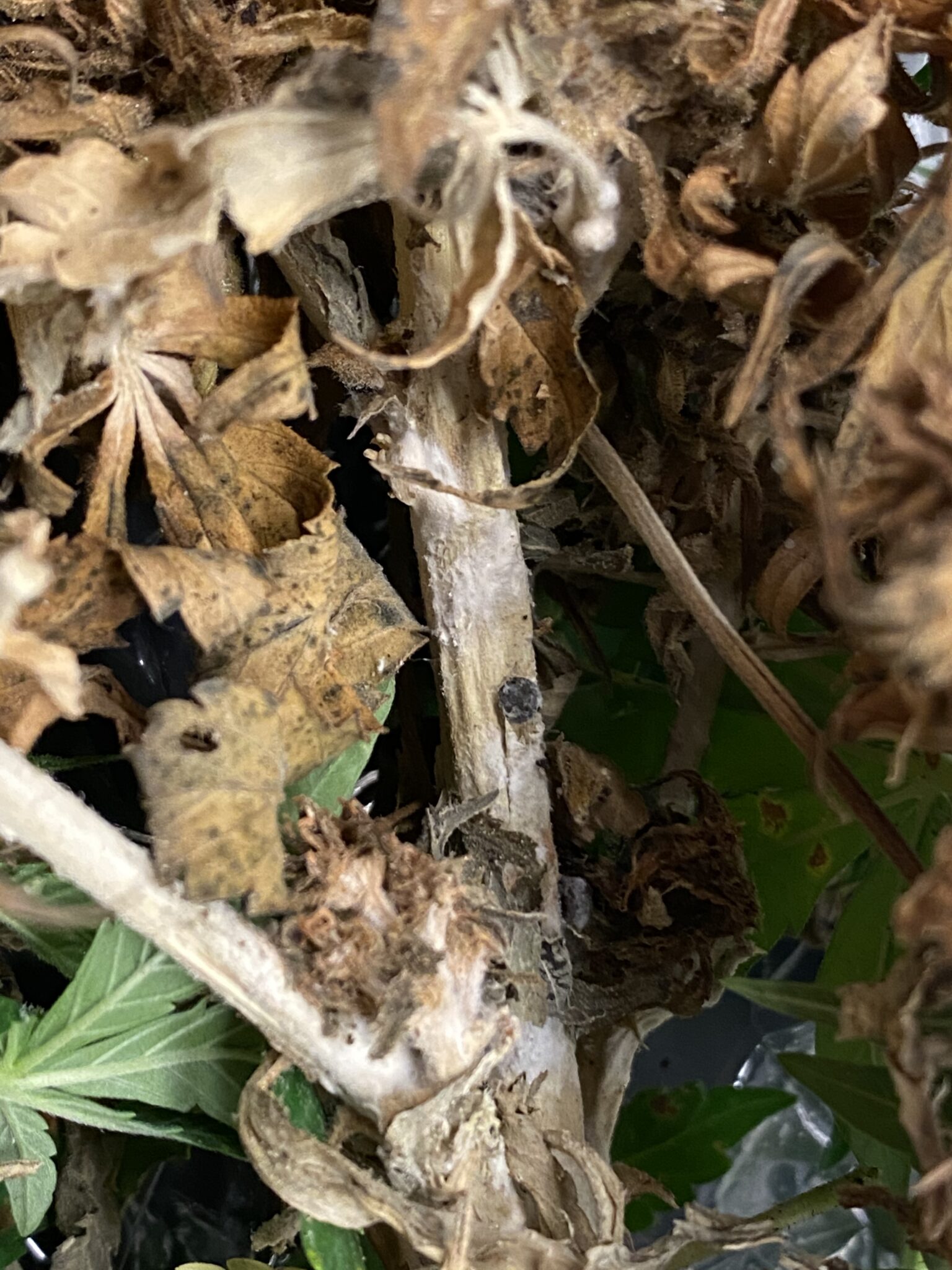The heavy rain events and somewhat cooler temperatures prior to this week’s heatwave increased disease pressure in hemp. This will be the first growing season we have observed downy mildew on hemp at Meigs farm. It was identified in the cannabinoid cultivar trial on many cultivars.
Downy mildew thrives when temperatures are cooler, there is high humidity, and free water.
Growers should look for greenish-yellow, water-soaked lesions on the tops of leaves. These lesions will progress and turn brown. A gray to black fuzzy appearance can be observed on the underside of leaves where the lesions are. Growers should avoid scouting in the early morning or after rain. Remove leaves with downy mildew can and place in a paper bag. Avoid leaving infected plant tissue on the ground. This will reduce inoculum for the following growing season.
It is unclear the economic impact of downy mildew in hemp. However, this pathogen can be devastating in other crops.
White mold was also found in the cultivar trial at Meigs farm. Day-neutral cultivars were the most affected, likely due to early flowering and dense floral structures. Growers should look for browning on the leaves and the floral tissue. A fluffy white appearance (mycelial growth) is found along the stem. We also observed black overwintering structures (sclerotia) on the stem.
There are several fungicides available for hemp growers in Indiana. While there are quite a few products registered through EPA, not all of them are registered in Indiana. Products need to include hemp on the label or supplemental label to be used. Growers can find the list of products can at https://www.oisc.purdue.edu/pesticide/pdf/pest_hemp_product_list.pdf. Supplemental labels can be found at https://www.oisc.purdue.edu/pesticide/index.html under the Pesticide Use in Hemp section.






